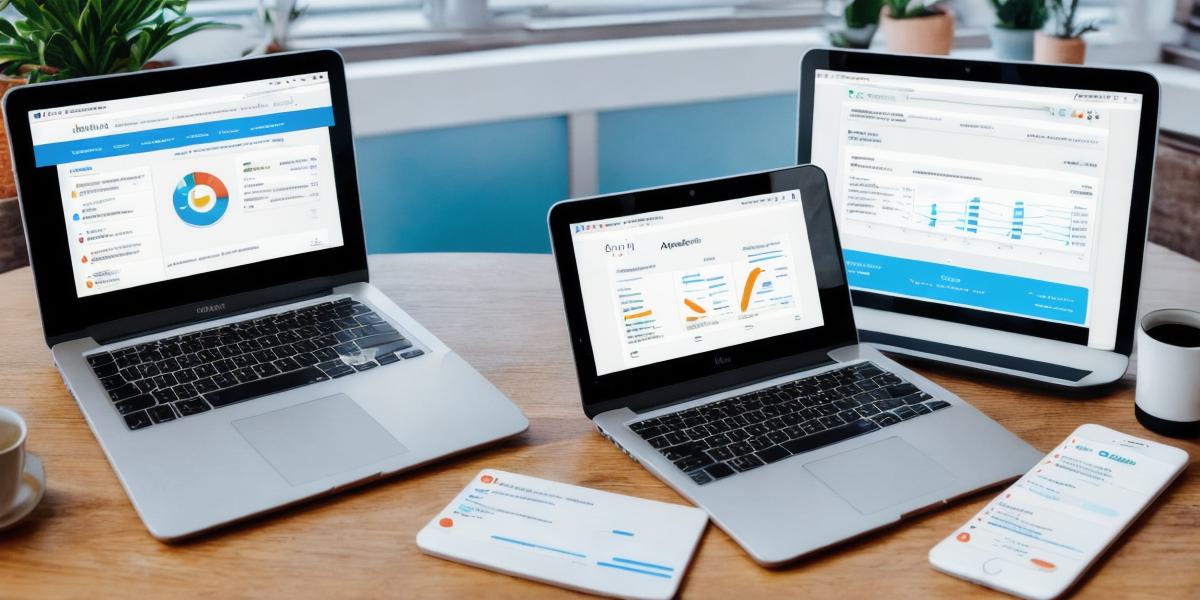As a small business owner, you know how important it is to market your products or services effectively to attract new customers and retain existing ones. However, with so many marketing tools and techniques available today, it can be overwhelming to determine which ones are the most effective for your specific needs. In this comprehensive guide, we will explore some of the most popular marketing tools and techniques for small businesses, along with their pros and cons, case studies, and real-life examples.
1. Social Media Marketing
Social media platforms such as Facebook, Instagram, Twitter, and LinkedIn have become essential marketing tools for small businesses. With over 3.7 billion active users on social media platforms worldwide, these platforms offer a vast audience for your business to reach. By creating an engaging social media presence, you can connect with potential customers, build brand awareness, and generate leads.
Pros:
- Cost-effective: Social media marketing is an affordable way to market your business, especially when compared to traditional advertising methods.
- Targeted advertising: Social media platforms offer targeted advertising options, allowing you to reach specific audiences based on demographics such as age, gender, interests, and location.
- Real-time engagement: Social media allows for real-time engagement with customers, providing an opportunity to build relationships and respond to feedback.
Cons:
- Time-consuming: Managing social media accounts can be time-consuming, requiring regular posting, monitoring, and engagement.
- Unpredictable: The effectiveness of social media marketing can be unpredictable, as it is influenced by factors such as algorithm changes and user behavior.
1. Email Marketing
Email marketing is another effective marketing tool for small businesses. By collecting email addresses from customers, you can send targeted and personalized messages to your audience, promoting new products or services, special offers, and events.
Pros:
- Cost-effective: Email marketing is an affordable way to reach a large audience, with low costs per thousand emails sent.
- Targeted advertising: You can segment your email list based on demographics such as age, gender, location, and purchase history, allowing you to send targeted messages to specific groups.
- High ROI: Email marketing has a high return on investment, with an average of $44 for every dollar spent.
Cons:

- Spam filtering: Emails may be flagged as spam by recipients’ email providers, leading to low open and click-through rates.
- Privacy concerns: Some customers may be hesitant to share their email addresses due to privacy concerns, limiting your reach.
1. Content Marketing
Content marketing involves creating and distributing valuable content such as blog posts, videos, infographics, and e-books to attract and engage a target audience. By providing useful information and insights, you can establish your business as an authority in your industry and build trust with potential customers.
Pros:
- Builds brand awareness: Content marketing helps to build brand awareness by providing value to your target audience.
- Improves search engine rankings: High-quality content can improve your website’s search engine rankings, making it easier for potential customers to find you online.
- Cost-effective: Content marketing is an affordable way to reach a large audience, as it does not require a significant investment in advertising.
Cons:
- Time-consuming: Creating high-quality content can be time-consuming, requiring research, writing, editing, and publishing.
- Unpredictable: The effectiveness of content marketing can be unpredictable, as it is influenced by factors such as audience behavior and search engine algorithms.
1. Influencer Marketing
Influencer marketing involves partnering with social media influencers or bloggers to promote your products or services to their followers. By leveraging the influence and credibility of these individuals, you can reach a larger audience and build trust with potential customers.
Pros:
- Reach a wider audience: Influencer marketing allows you to reach a wider audience, as influencers typically have large followings on social media platforms.
- Build trust: Partnering with influencers who have a strong following and are trusted by their followers can help to build trust with potential customers.
- Cost-effective: Influencer marketing can be an affordable way to promote your business, as you only pay for the influencer’s services.
Cons:
- Unpredictable: The effectiveness of influencer marketing can be unpredictable, as it is influenced by factors such as influencer performance and audience behavior.
- Difficulty in finding the right influencers: Finding the right influencers who align with your brand values and have a relevant audience can be challenging.
1. Search Engine Optimization (SEO)
Search engine optimization (SEO) is the process of optimizing your website’s content and structure to improve its visibility in search engine results pages (SERPs). By improving your website’s SEO, you can attract more organic traffic from potential customers who are actively searching for products or services like yours.
Pros:
- Cost-effective: SEO is an affordable way to increase your website’s visibility and attract more organic traffic, as it does not require a significant investment in advertising.
- Improves user experience: By improving your website’s structure and content, you can provide a better user experience for potential customers, leading to higher conversion rates.
- Long-term strategy: SEO is a long-term strategy that can provide ongoing benefits for your business.
Cons:
- Time-consuming: SEO can be a time-consuming process that requires regular updates and optimization of website content and structure.
- Unpredictable: The effectiveness of SEO can be unpredictable, as it is influenced by factors such as search engine algorithms and user behavior.
1. Pay-Per-Click (PPC) Advertising
Pay-per-click advertising involves placing ads on search engine results pages or social media platforms that are targeted to specific keywords or demographics. By paying for each click on your ad, you can reach a larger audience and drive more traffic to your website.
Pros:
- Targeted advertising: PPC allows you to target specific keywords or demographics, ensuring that your ads are seen by the right people.
- Measurable results: PPC provides measurable results, allowing you to track the performance of your campaigns and adjust your strategy accordingly.
- Cost-effective: PPC can be an affordable way to drive traffic to your website, especially when compared to traditional advertising methods.
Cons:
- Unpredictable: The effectiveness of PPC can be unpredictable, as it is influenced by factors such as ad competition and user behavior.
- High costs: PPC can be costly, with some keywords and demographics being highly competitive and expensive to bid on.
1. Video Marketing
Video marketing involves creating and sharing videos that provide value to your target audience. By using video content, you can engage your customers in a more interactive way and build trust with potential customers.
Pros:
- High engagement: Video content is highly engaging, as it captures the attention of viewers and encourages them to share your content.
- Builds brand awareness: Video marketing helps to build brand awareness by providing value to your target audience.
- Cost-effective: Video marketing can be an affordable way to reach a large audience, as you only need equipment and software to create the videos.
Cons:
- Time-consuming: Creating high-quality video content can be time-consuming, requiring research, writing, editing, and publishing.
- Unpredictable: The effectiveness of video marketing can be unpredictable, as it is influenced by factors such as audience behavior and search engine algorithms.
1. Affiliate Marketing
Affiliate marketing involves partnering with affiliates who promote your products or services to their followers. By paying a commission for each sale generated through their affiliate link, you can reach a larger audience and drive more revenue for your business.
Pros:
- Reach a wider audience: Affiliate marketing allows you to reach a wider audience, as affiliates typically have large followings on social media platforms.
- Cost-effective: Affiliate marketing can be an affordable way to promote your business, as you only pay for the affiliate’s services and any commissions earned through their link.

- Performance-based: Affiliate marketing is a performance-based strategy that pays out commissions based on sales generated through the affiliate’s link.
Cons:
- Difficulty in finding the right affiliates: Finding the right affiliates who align with your brand values and have a relevant audience can be challenging.
- Unpredictable: The effectiveness of affiliate marketing can be unpredictable, as it is influenced by factors such as affiliate performance and user behavior.
In conclusion, there are many different marketing strategies that small businesses can use to reach their target audience and drive revenue. While some may be more effective than others, the key is to find the right strategy for your business and consistently track its performance to make adjustments as needed. By using a combination of these strategies, you can create a comprehensive marketing plan that will help your business grow and succeed.




